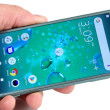Review: Google Pixel XL
Nov 1, 2016, 3:55 PM by Eric M. Zeman

Google's Pixel XL is one of the company's finest efforts, even if it isn't perfect. This high-end Android slab wraps top specs in an aluminum shell — but the hardware isn't the real story here. The Pixel XL is the first handset to ship with the new Google Assistant on board, and the finessed Android 7.1 launcher makes the XL a more usable phone. Here is Phonescoop's in-depth review of the Pixel XL from Google.
Hardware
Is It Your Type?
The Pixel XL is a high-end piece of hardware that includes Google's refreshed user interface and the new Google Assistant. If you're all about the "pure Android" experience, then there is no option other than the Pixel XL. That is, if you can afford it. The Pixel XL costs as much as the priciest devices from Apple and Samsung, making it a luxury item for many.
Body
The Pixel XL is a large, metal-and-glass phablet with top specs. Though the phone was manufactured by HTC, Google designed every facet of the Pixel XL. That's good and bad. Google's branded smartphones have been a bit hit-or-miss in the style department over the years, and I'm not sold on some aspects of the Pixel XL's design.
Google's new Pixel phones are the Nexus series re-imagined. The Pixel and Pixel XL replace the Nexus 5X and Nexus 6P, respectively. The Pixel XL boasts an aluminum chassis with glass panels on the front and rear surfaces; it is the larger of the two new phones from Google. The XL's shape leans toward the plain. Last year's Nexus 6P had more personality, as far as I am concerned. The XL has rounded corners, a rather thick profile, and simple curves. I like that the metal sides have rounded backs, flat edges, and a chamfered rim all at the same time. Personally, I pretty much hate the glass panel that takes up a big chunk of the rear surface; it just doesn't do anything for me. There's likely an engineering purpose behind the design tied to radio access. Even so, I'd prefer it if the entire rear panel were a single piece of aluminum.
With a 5.5-inch screen, the Pixel XL is a big phone. It doesn't have quite the footprint of an iPhone 7 Plus, but it's not much smaller. Most people will need two hands to use the Pixel XL effectively. I was able to use it one-handed more often than not, but there's no doubt it's awkward at times. If you have smaller hands, plan on using both paws most of the time. The Pixel XL's shape does help a little bit. The back edges have a nice rounded shape that makes the phone comfortable to hold. The smooth design means it slips into pockets easily. It doesn't weigh too much, either.
Build quality is very good, but not the absolute best I've seen. The glass panel on the rear surface, in particular, bugs me. There's a small gap near the top that stands out to my eyes and drives me nuts. The Gorilla Glass 4 front is pleasing to the thumb, however, and the metal chassis feels strong.
The Pixel XL's face is an exercise in Boring Design 101. It has generic curves, thick bezels, and doesn't stand out or impress in any meaningful way. I reviewed the black color. The bezel looks like a dark, dark gray to my eyes more so than black. The display is inky black when off and is clearly darker than the surrounding bezel. The user-facing camera, perched in the top-left corner, is hard to spot. A sensor positioned between the display and earpiece is hardly visible at all. These elements are much more visible on the white and blue versions of the XL. There are no buttons on the phone's face at all.
You'll find the screen lock button and volume toggle on the XL's right edge. The screen lock button is closer to the top. It has a nice, textured profile that helps differentiate it from the smooth volume toggle. The travel and feedback of the lock button are just about perfect. The volume toggle has a lower profile than the screen lock button and travel and feedback aren't quite as satisfactory. I wish the two controls were swapped so the screen lock button were positioned closer to the middle of the side edge. The SIM tray is tucked into the left edge of the phone and a 3.5mm headphone jack is in top. A USB-C port is placed on the bottom edge, flanked by speaker slits on either side. USB-C is slowly gaining more traction in the market, but compatible accessories are still a bit scarce.
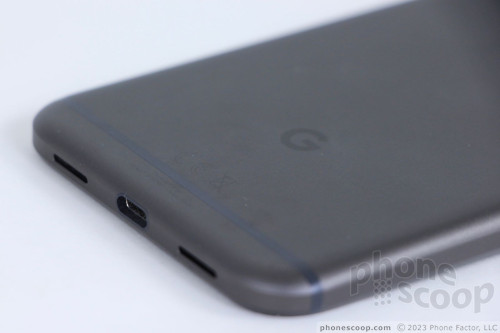
The rear panel is about two-thirds metal and one-third glass. The glass houses the camera module, flash, sensors, and fingerprint reader. The camera is flush with the surface, while the fingerprint reader is indented a bit. I had no trouble finding and using the fingerprint reader without looking. An antenna line stretches across the very bottom. You'll need to be careful with the rear glass. I scratched the glass on my review unit quite easily. Apparently it's not Gorilla Glass 4, which protects the display. Maybe a case is in order.
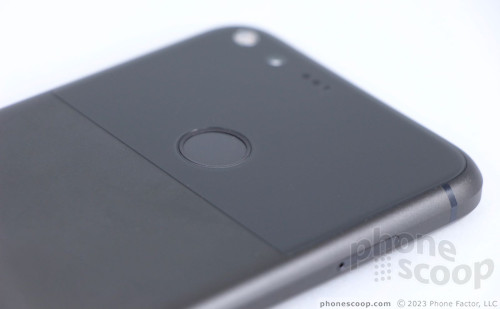
It should go without saying (though I'll say it anyway), but the rear panel is solid and cannot be removed. That means the battery is sealed inside. The phone does not support memory cards.
The Pixel XL is a fine piece of hardware. It perhaps doesn't have the personality that some high-end devices do, but Google devices are generally more about the software than the hardware. In other words, you're not buying the Pixel XL for its looks.
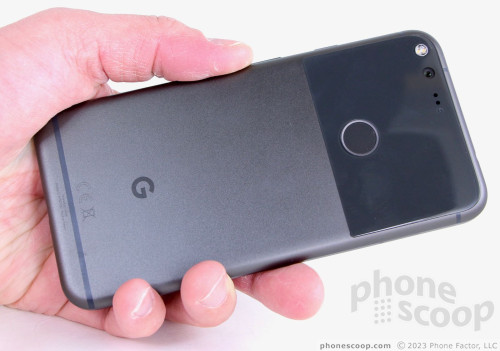
Screen
The XL's display measures 5.5 inches across the diagonal and boasts quad HD (2560 x 1440) resolution. Google selected an AMOLED panel for the Pixel and I found it to be bright, colorful, and sharp. I was able to use the Pixel XL indoors and out with no trouble at all. In fact, the screen was easily visible outdoors even with the brightness set fairly low. That's good news for your battery. Colors are oversaturated a bit, as they tend to be on most AMOLED panels, but the results are pleasing to the eye. Sharpness is excellent. On-screen elements are crisp and individual pixels are truly invisible. Viewing angles are excellent. The Pixel XL's display is quite good.
The quad HD resolution makes the Pixel XL ideal for virtual reality. In my tests with Google Cardboard, the Pixel was on par with other quad HD displays in providing a rich VR experience.
Signal
Verizon is the only carrier that actually sells the Pixel XL, but the Pixel XL is available directly from Google unlocked, with support for a generous number of LTE bands, including those used by all of the major U.S. carriers. I tested the Pixel XL on AT&T and T-Mobile in the metro NYC area and was pleased with the results. The phone maintained a connection to both networks in strong and weak coverage areas alike. I had no trouble connecting calls under the worst network conditions. The Pixel XL held onto a call on AT&T's network during a 10-mile highway drive without issue, but the same drive resulted in one dropped call on T-Mobile's network. This is pretty much on par with the behavior I see from other phones across the same route.
Data performance was excellent on both networks. WIth support for Cat 9 LTE, the Pixel XL is one of the quicker devices I've tested in recent months. Peak speeds on AT&T and T-Mobile broached 60 Mbps and average speeds were well above 20 Mbps. The XL handles surfing the web and browsing social networks such as Facebook and Instagram with ease. Streaming media from Spotify, YouTube, and apps didn't challenge the phone at all.
Sound
The Pixel XL is an average voice phone at best. The earpiece doesn't produce quite enough punch for my tastes. I had trouble hearing calls in noisy spaces such as coffee shops and city streets, even with the volume all the way up. I suggest you seek out a quiet spot if you have important calls to make. Clarity ranged from mediocre to decent. Calls on T-Mobile's network were generally a bit clearer than those on AT&T's network, but that's not saying much. The earpiece didn't suffer from distortion, but voices often sounded muffled. Conversely, those I spoke to through the Pixel XL said I sounded loud and clear.
The speakerphone isn't great, either. Volume is pretty good, but clarity is still off a bit. I was able to hear calls in a moving car, but it was sometimes a struggle. You have to put the volume all the way up, and that introduces some distortion.
Ringers and alerts are decent, but could be louder. I wasn't impressed with the vibrate alert, either. I often missed notifications because I couldn't feel the vibrations. That's a bummer.
Battery
I expected better from the Pixel XL's 3,450 mAh battery. That's a decent-size battery, yet the XL was sometimes gasping for breath at the end of the day. I tested the XL with all of the radios active and screen brightness set to about 50%. I generally had the phone connected to an Android Wear smartwatch, and streamed music to Bluetooth headphones quite a bit. I worked the phone pretty hard. If anything, I noticed that the camera put a lot of strain on the battery, especially when recording video. Don't get me wrong: the phone consistently lasted an entire day — from breakfast to bedtime — with some power to spare. I guess I was hoping for a smidgen more.
The phone includes the basic Android battery-saver tool. The battery saver tones down the processor, brightness, notifications, and such. You can set it to come on automatically when the battery reaches 15% or 5%, or toggle it on manually. It helps a little bit.
If you find yourself in trouble, the Pixel XL supports Quick Charge 3.0 and it ships with a high-speed charger. Plug the phone in for as little as 15 minutes and you'll gain hours of additional battery life. That's clutch.
Bluetooth, GPS, NFC, WiFi
The Pixel XL is a wireless champ. I was particularly pleased with the XL's Bluetooth performance. The phone connected to a wide range of devices with ease. The phone had no trouble managing Bluetooth headphones and a smartwatch that were connected continuously over the course of a week. Calls made via Bluetooth headsets were better than through the phone's own speakers. Calls routed to my car's hands-free system were decent, but on the quiet side. Music sounded very good through Bluetooth headphones, but I have heard better from a few other phones.
The GPS radio was quick and accurate. The XL often pegged me within 5 seconds and was accurate to within about 15 feet. It doesn't get much better than that. The phone was a fine navigation tool, as the fast data performance and GPS accuracy meant it was spot-on when driving from Point A to Point B.
With NFC aboard, you can use the XL to make mobile payments via Android Pay. I set up the tap-and-go payment service and found it worked well where supported. The NFC radio also helps pairing with some Bluetooth accessories. This function worked well, too.
The XL's WiFi radio is very, very good. I saw incredible data speeds on strong WiFi networks. For example, the XL downloaded a 500 MB app via WiFi in about 20 seconds. The phone downloaded several gigabytes of Spotify music in less than 10 minutes.
Software
Lock Screen
Google took a page from Motorola with the Pixel XL's Active Display, but the execution is somewhat lacking. Incoming notifications, such as text messages and emails, will briefly flash on the screen when the phone is locked. This is fine if the phone is sitting on a table or desk where it might catch your eye. The white text is rather small and impossible to read from more than an arm's length away. Worse, the notifications disappear so quickly you hardly have a chance to see what they are before they vanish. I wish the XL displayed these notifications when you pull the phone out of your pocket like Motorola phones do, but it doesn't.
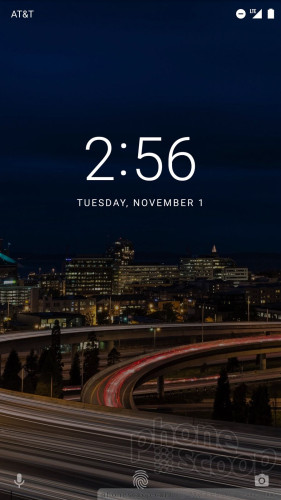
The actual lock screen is typical for an Android handset. A press of the screen lock button wakes the display and reveals a large digital clock with notifications lined up beneath it. As per the norm, you can control which apps are allowed to send notifications, and what info appears on the lock screen. The Quick Settings shade is accessible from the lock screen, and shortcuts to the voice search and the camera apps are in the lower left and right corners, respectively.
The fingerprint reader is your best bet as far as security goes. I easily set up several fingerprints and the reader is among the quickest and most accurate I've ever used. Honestly, it amazes me how well the reader scans partial fingertip prints and unlocks the phone. It's far quicker to use the fingerprint reader than type in a PIN or password, though those options are available, too. What's more, you can secure individual apps with the fingerprint sensor, allowing you to add another layer of protection to your device.
Last, the fingerprint reader can be used to swipe open the notification shade. When using the phone, a quick downward swipe on the reader will pull down the shade. A second swipe will open the Quick Settings panel. You can hide the shade with an upward swipe. It's too bad you can't clear all notifications by swiping sideways.
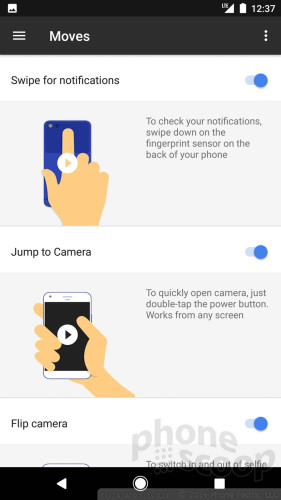
Home Screens
The Pixel XL is the first device to run Android 7.1 Nougat, which revises the home screen experience a bit when compared to Android 7.0.
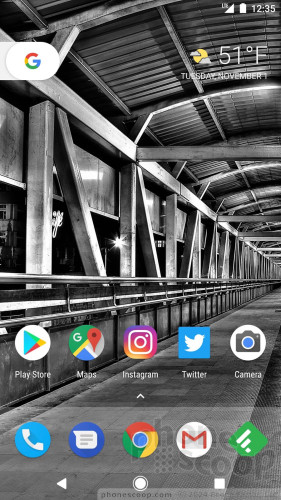
Basic home screen behaviors are unchanged. The Pixel XL relies on a version of the Google Now Launcher, which means the left-most home screen is reserved for the Google Now panel, with subsequent panels laid out to the right. Google Now is not the Google Assistant (more on that later) and this might be confusing. Google Now scans your calendar, email, location history and other personal data to offer suggestions about travel times, potential events, and so on. The home screen panels support app shortcuts, widgets, and the expected Android UI elements.
The biggest and most important change to the launcher is the loss of the app drawer button. Typically, one of the shortcuts in the dock at the bottom of the screen is reserved for the app drawer. That's no longer the case; the dock now hosts five app shortcuts, rather than four shortcuts plus the app drawer. The app drawer still exists, but there is no longer a dedicated button to open it. Instead, you swipe up from the dock at the bottom of the screen. It takes quite some time to adjust to.
Another big visual change: Google has rounded off its own app icons. Everything about the home screen feels more circular. Even the Google Search bar is gone in favor of a small, oval button in the upper left corner. Google has made this new circular theme available to third-party app developers. Who knows if they'll take advantage of it. What's odd is that Google itself didn't adopt the circular icons universally. For example, the Google Cardboard, Fit, Home, and Street View apps still use square icons.
The settings menu of Android 7.1 drops the green text for blue text, but is otherwise the same as what we saw on Android 7.0 in September. That means more detail in the main settings screen so you can glean information at a glance. For the record, I like the blue better than the green. The new color doesn't change usability, but it looks nicer than the stale green. Android 7.1 also includes quick access to support from Google, which is available via the settings menu. It's easy to call Google support directly, or chat with them through the support app. I tried both; Google responded quickly.
The Quick Settings panel is unaltered from Android 7.0, but that's not the best news. Android 7.0 removed the ability to quickly toggle radios on and off; instead, tapping any of the radios opens the secondary menu to that radio rather than simply turning it off. This is a bummer.
Then there's the wallpaper app. The Pixel XL includes the new Google Wallpaper app, which automatically rotates the home and lock screens through high-quality, themed wallpapers. I love this app. Thank goodness it is available to non-Pixel phones and you can add it your own handset.
Android 7.1 introduces a few movement-based tools. The first is the fingerprint reader trick mentioned above. The Pixel XL also allows you to double-tap the screen lock button to open the camera, and switch between main and selfie cams by twisting the phone.
On the performance front, the Pixel ships with Qualcomm's top processor, the Snapdragon 821. It may represent only a small bump in clock speed when compared to the Snapdragon 820, but the 821 has a new image signal processor for better pictures and faster modem support for quicker wireless speeds. This chip is amazing and the Pixel XL chomps through everything — including virtual reality apps and content — without breaking into a sweat.
Camera
The Pixel XL's camera app is a direct carry-over from the app that's already available to Google's Nexus handsets. As noted earlier, you can launch the camera with a double-press of the screen lock button or via the lock screen shortcut. The camera opens in a blink.
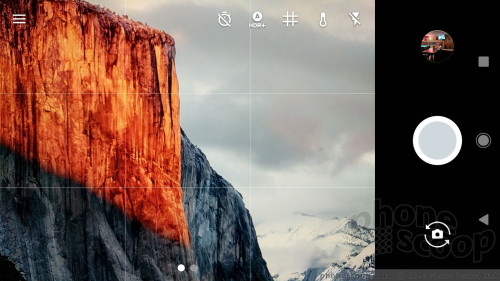
The Google camera app has a fairly basic feature set. There are simple tools along the top for setting a timer, turning the grid on/off, toggling HDR+ between on/off/auto, and setting the flash to on/off/auto. The one addition the Pixel XL has when compared to the Nexus 6P is a white balance control tool, which lets you select from several presets, such as sunny or fluorescent.
There are just a few shooting modes: auto, slow motion, panorama, photo sphere, and lens blur. I like having slow motion, but I'd also like to see timelapse or hyperlapse.
Lens blur lets you create shots where the subject is sharp, but the rest of the image is out of focus (also called bokeh). This shooting mode actually requires some technique, as you have to move the camera a specific way while shooting the image. This allows the camera to gather some perspective data and then render the image. After the image has rendered, you can adjust the point of focus and how far out it spreads. Other companies have produced easier-to-use bokeh modes that deliver better results.
The XL focuses and captures images in a blink. Need to shoot video? Swipe the screen and the XL will jump to video mode. There aren't any special video modes, but you can select up to 4K resolution.
I like that you can easily switch between the selfie camera and the main camera by twisting the phone.
The camera is painless to use, which is how it should be.
Photos
Wow. The Pixel has a 12-megapixel sensor and an aperture of f/2.0. The phone leans heavily on the Snapdragon 821's new image signal processor and its “HDR+” mode to put those megapixels to more effective use than many other phones on the market.

I took the Pixel XL with me on a recent trip to China and some of the images I captured rivaled those taken with my dSLR. Low-light shooting — long the bane of camera phones — is where the HDR+ mode works its magic. The richness, color, and detail in the Chinese lamps (see below) is unrivaled. I'm seriously impressed with this camera.
The basics, including focus, white balance, and exposure, are generally spot on nearly all the time. The camera almost always did exactly what I wanted/expected it to do, even in challenging shots like the selfie with the Chinese gate below. Speaking of selfies, the XL's user-facing camera does a very good job.
You can shoot 4K video with the Pixel and, for the first time, I'm going to go ahead and recommend that you give it a shot. I was pleased with the video I captured with the Pixel XL, and the 4K resolution looked great on my PC monitor.
Why shoot in 4K? Aside from the good results, Google is giving Pixel owners unlimited, full-resolution storage in Google Photos for pictures and video. Shooting in 4K will eat up huge amounts of your phone's storage, but you can set Google Photos to "optimize" local storage by offloading files to Google's servers rather than keep them on the phone. (Remember, the Pixel XL comes in 32 GB and 128 GB variants.)
I don't think this benefit can be overstated. Definitely take advantage of Google's generosity here.
Google Assistant
The Google Assistant replaces some of Google Now's functions, but doesn't actually replace Google Now. Google Now consists of the info card on the home screen and used to handle spoken voice requests. Now, all voice-related queries are handled by Google Assistant.

Similar to Siri on the iPhone, you can summon the Google Assistant by saying "OK, Google" even when the XL is locked. The phone jumps to life quickly and the dialog box clearly indicates visually when the phone is listening for requests. It vibrates very quickly, which you can feel when the phone is in your hand. It would be nice if the phone also issued an audible chime to let you know it is listening when you're not looking directly at the screen or holding it in your hand.
Google Assistant is better than Google Now in several key ways. First, it's much faster; second, it's more accurate; third, it's easier to understand.
I'm sure some of the speed improvement I'm seeing is due to the Pixel XL's fast processor (when compared to the Nexus 6P), but it's important to remember that network speed plays a role here, too. At home over blazing fast WiFi, the Assistant does everything immediately. It's not as quick when you're sending requests over LTE. Even then, however, it's faster than Google Now on the 6P.
The accuracy improvement is absolutely amazing. Google Assistant is much more apt to correctly translate my speech to text, which leads to better results. Google Assistant is consistently better at understanding my speech than Siri. Moreover, Google Assistant returns far better results. It's not even close. Google's ability to parse natural-language requests, rather than force people to use predetermined robotic commands, is a game-changer. More to the point, Google Assistant was able to understand what I was saying even with annoying background noise, like the television set.
As for understanding Google Assistant, Google took pains to improve the Assistant's actual voice and the speed at which it reads answers. The Assistant is less robotic and sounds just a bit more natural when speaking to you. I'm glad it reads quicker, too, so you're not waiting ages for the Assistant to talk through search results.
What can you do with the Assistant? Plenty: schedule meetings, dictate and send text messages, play Spotify playlists, find movie trailers in YouTube, search for just about anything, get directions, seek out business hours, book hotels, and on and on and on. It doesn't work perfectly with all third-party apps yet, but that should improve over time.
Google Assistant is by far the best voice-based search and command tool available from any device.
Wrap-Up
The Google Pixel XL is a compelling smartphone. It's not without faults, but the pros far outweigh any cons.
To me, the biggest con is the hardware. The Pixel XL is simply a boring phone to behold. Nothing about the design stands out in a meaningful way, other than the weird glass panel on the back — at least in the black and white versions. The blue color is certainly unique, but it's less appealing due to the limited storage. The metal-and-glass materials are assembled well enough, and thankfully the screen kicks some butt. The XL is an LTE data monster, but more of a mouse when it comes to call quality. Battery life is on par with competing devices, and the phone's secondary radios all do their job well. The fingerprint sensor, with its notification shade trick and app-level security, gives other fingerprint sensors the middle finger.
The software — and Google Assistant in particular — are what should draw most people to the Pixel XL. Android 7.1 Nougat is the most usable version of Android I've ever encountered. It makes just the right set of tweaks to simplify and empower the user interface. Google Assistant is genuinely helpful. I've used Google Now and Siri for years, but Google Assistant has convinced me to talk to my phone a whole lot more (it's not weird, I promise.)
Last, but not least, the camera. It's simply one of the best I've tested this year and is easily on par with that of the Galaxy S7 and iPhone 7. Toss in free, unlimited, full-resolution backups and you have a winning combination.
If only it didn't cost so much. The Pixel XL costs a whopping $770 for the 32 GB model and a soul-crushing $870 for the 128 GB model. That's as much as the 128 GB iPhone 7 Plus. The one ray of light here is that both Google and Verizon will let you finance the phone through monthly payments.
The Pixel XL is Google at the top of its game.

Comments
No messages


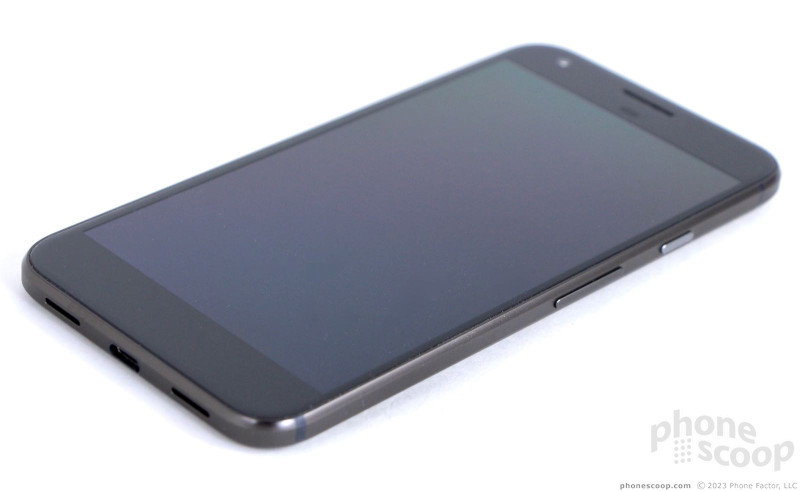



















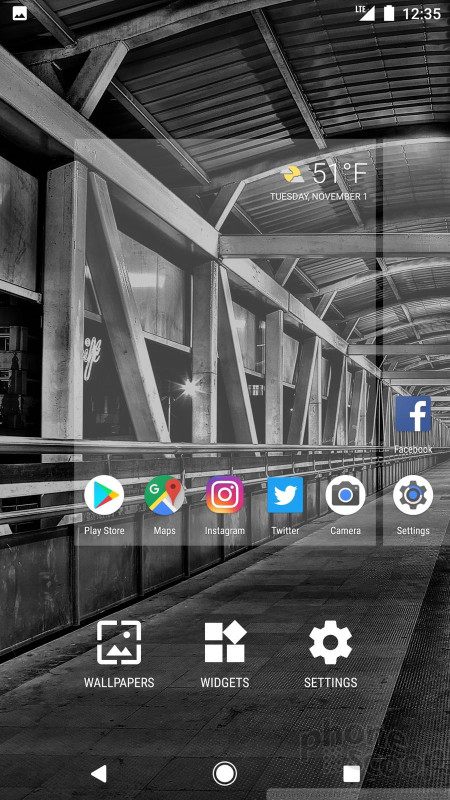












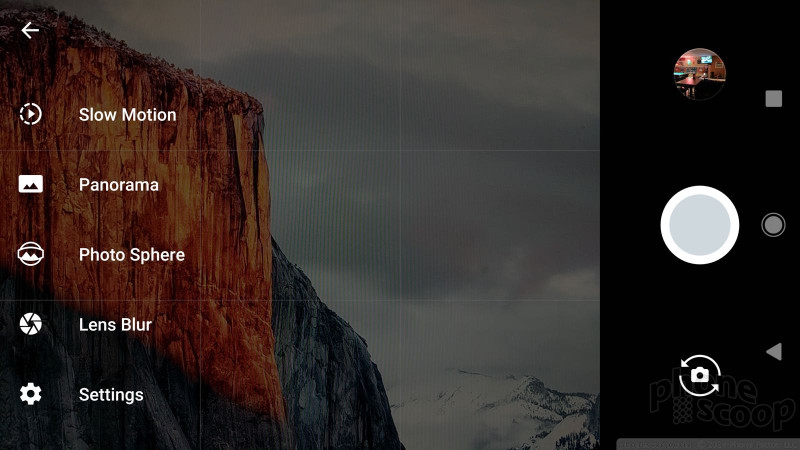






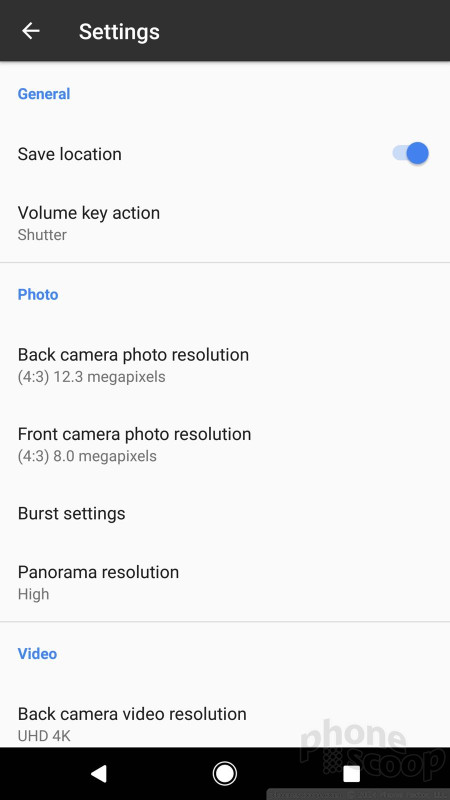




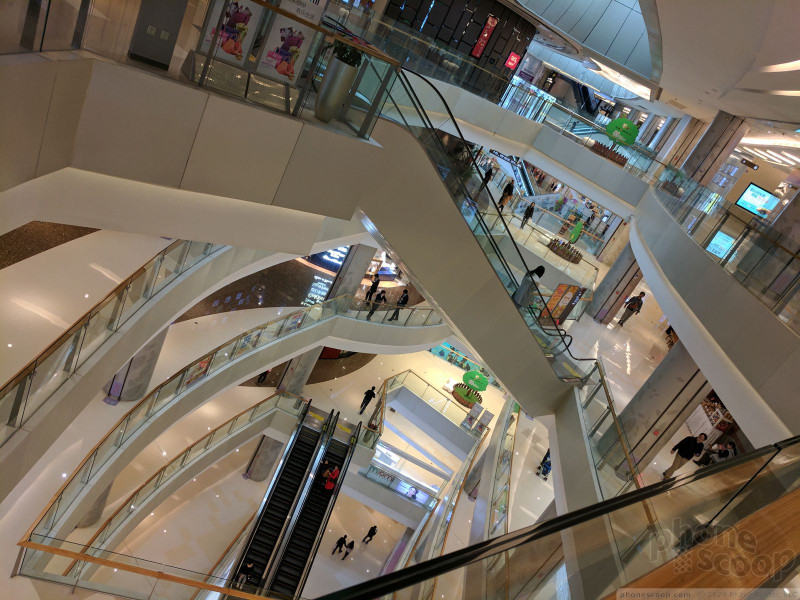


















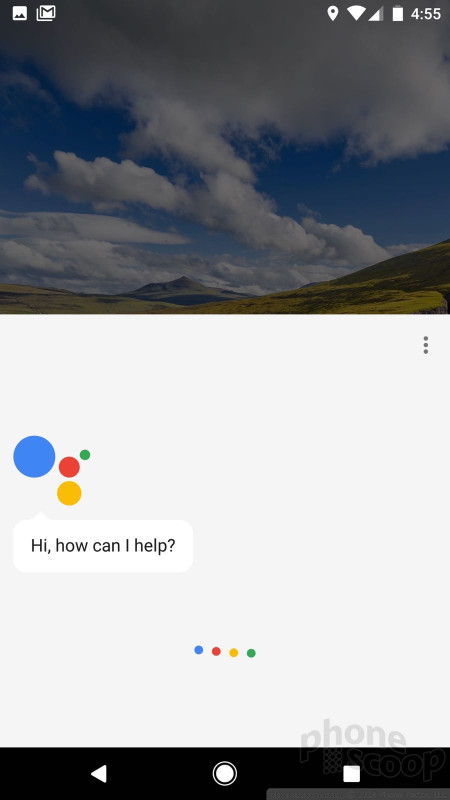




 First Look: What's New In Android O
First Look: What's New In Android O
 5 Best Unlocked Smartphones
5 Best Unlocked Smartphones
 Review: OtterBox Commuter for Google Pixel XL
Review: OtterBox Commuter for Google Pixel XL
 Review: Google Clear Case for Pixel XL
Review: Google Clear Case for Pixel XL
 Google Schedules Oct. 4 Phone Event As Pixel 2 XL Swings by FCC
Google Schedules Oct. 4 Phone Event As Pixel 2 XL Swings by FCC
 Google Pixel XL
Google Pixel XL


